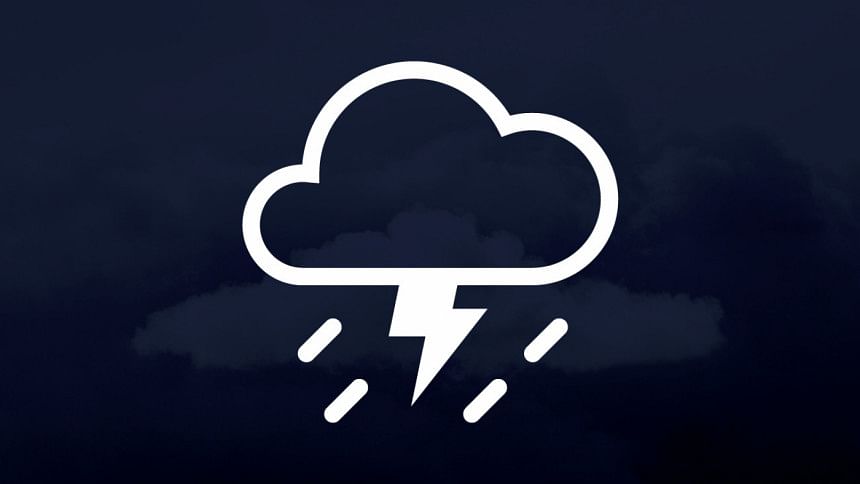Rains now more intense, in shorter spells

While Dhaka typically sees 373mm of rain throughout July, a heavy downpour yesterday morning delivered over a third of that amount in just six hours.
According to experts and meteorologists, the monsoon rainfall pattern is changing across the country, as evidenced by the shorter spells of intense downpours seen nowadays.
While there has been little change in the overall amount of rainfall, climate change is causing a decline in the number of rainy days, they added.
Md Bazlur Rashid, a meteorologist at the Bangladesh Meteorological Department, said that incidents of extreme climatic events like longer heatwaves and more rainfall in shorter spells are becoming more common in Bangladesh.
"The total amount of rainfall has decreased about 3-5% in recent years but the frequency of extreme rainfall in shorter periods has increased," he told The Daily Star yesterday.
A study titled "Changing Climate of Bangladesh: Trends and Changes Detected in Weather Observations from 1980 to 2023 in Bangladesh" found that the average rainfall during this period has not changed, but the number of rainy days decreased in Dhaka.
"In Dhaka, the average precipitation in the 1980-2020 period did not change significantly in any season. However, there is some evidence of a decrease of around 2.7 days per decade in the number of rainy days in the monsoon season," the study states.
Daily extreme precipitation events will likely intensify by about 7 percent for every 1°C increase in average global temperature, according to the latest Intergovernmental Panel on Climate Change (IPCC) report.
"As the world is getting warmer, it is impacting the weather pattern. Now both evaporation rate and atmospheric moisture holding capacity are increasing and that's why we see more rainfall in shorter periods," Prof AKM Saiful Islam, one of the lead authors of the IPCC report.
Experts said incidents of extreme rainfall are being observed more frequently in many parts of the world, especially in the climate-vulnerable countries and Bangladesh is a prime example.
"In addition to this, there is another pattern of the monsoon being delayed, as reflected by the decline in the average amount of rainfall in June and July," said Abdul Mannan, a former BMD meteorologist.
Another study, "Spatio-temporal patterns of rainfall variability in Bangladesh" published in the peer-reviewed International Journal of Global Warming, found a substantial decline in the rainfall in Bangladesh.
It said that the rainfall during monsoon seasons lasting from June to September contributed around 80 percent of the total rainfall.
The study also found that the southeastern region received the highest amount of rainfall, especially the unusually high amount observed in the monsoon seasons of 2014 and 2020. The eastern region received the second-highest amount of rainfall. The northwestern region experiences the lowest amount of rainfall, while the central region receives below-average rainfall.

 For all latest news, follow The Daily Star's Google News channel.
For all latest news, follow The Daily Star's Google News channel. 



Comments